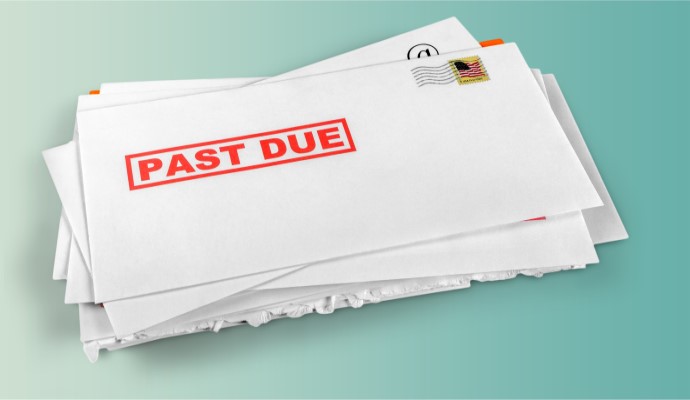Hospitals Offer Suggestions for Surprise Billing Law Implementation
New details on implementation of the No Surprises Act are forthcoming, so FAH provided some recommendations on how to eliminate surprise billing.

Source: Getty Images
- With new details on implementation of the No Surprises Act slated to come in early July, the Federation of American Hospitals (FAH) has offered several suggestions for combatting surprise billing to the Biden-Harris Administration’s Cabinet Secretaries.
Among the group’s suggestions is making sure hospitals and other healthcare stakeholders have enough time to prepare for the new medical billing processes that will accompany implementation of the law in 2022, which includes full notice and comment rulemaking for each implementation regulation.
“[T]he No Surprises Act outlines an ambitious implementation timeline for numerous new policies and the creation of an entirely new dispute resolution process,” FAH wrote in the letter. “The myriad of implementation issues to consider and decisions to make – coupled with the potential impact of these policies on health plan/provider relationships and operations – means it is vital that your Departments provide ample opportunity for stakeholder input on any proposed regulations before they are implemented.”
The No Surprises Act will protect patients from so-called surprise bills, which typically occur when a patient receives care from an out-of-network provider despite going to an in-network facility. This happens more often in the emergency department and can cost patients hundreds to thousands of dollars.
Congress agreed to develop an arbitration process called an independent dispute resolution (IDR) that allows payers and providers to negotiate an appropriate price for services resulting in a surprise medical bill. An independent arbitrator then decides the final price payers will reimburse providers.
READ MORE: Physicians Collect More From Surprise Medical Bills in ED
The law’s implementation, which is slated for January 1, 2022, will shake up medical billing processes for hospitals and other provider organizations, meaning stakeholders need “adequate time of at least a few months…to operationalize the final rules,” FAH stated.
The hospital group also advised Cabinet Secretaries, including HHS Secretary Xavier Becerra, to make sure qualifying payment amounts (QPA) that trigger the arbitration process do not become “de factor” benchmark prices used by payers to reimburse providers less for surprise care or an incentive for payers to drop in-network provider to cut costs.
Instead, FAH recommended that implementing regulations use geographic area—either the metropolitan statistical area or insurance rates areas—in the QPA methodology when appropriate. The group also advised using comparable rates as input in the QPA calculation to “protect misuse.”
“For example, the calculation should not include denied claims or rates from narrow networks or exclusive plans (e.g., HMOs, EPOs). Such plans are by their nature exclusionary and should not be considered as meeting the threshold type of plan from which rates can be used in the QPA calculation,” the letter stated.
“In addition, the calculation should not include any public payer rates such as Medicare Advantage, Medicaid managed care, CHIP, Tricare, or worker’s compensation. Public payer rates are not permitted to be considered under the IDR process and thus building them into the QPA, which can be considered in the IDR process, is not permissible under the statute,” the letter continued.
READ MORE: Key Ways Providers Can Prepare for New Surprise Billing Rules
What should be included in QPA calculations, according to FAH, are total maximum payments between a plan and in-network providers, an add-on percentage to offset the contracted discount of in-network services, and the type of facility and acuity of the patient.
Additionally, the QPA methodology should be transparent considering the impact it will have on provider reimbursement, FAH stated. That includes letting providers know the inputs, such as number of rates, each specific rate, and each specific facility.
“Health plans should be required to transmit this information to out-of-network providers when communicating the patient cost-sharing amount, including it on the explanation of benefits (EOB) / explanation of payment (EOP), and be required to put the methodology on their websites. Such detailed information is necessary for providers to model the QPA and ensure the appropriate facilities were included in the calculation,” the group stated.
Finally, FHA asked Cabinet Secretaries to consider the notice and consent requirement in the law.
The No Surprises Act allows patients to choose or maintain out-of-network care through a notice and consent process for certain services, such as surgery by an out-of-network provider or post-stabilization services at an out-of-network facility.
READ MORE: Surprise Billing Arbitration Favors Providers, But Rates Are High
FAH identified several issues that implementing regulations need to resolve, such as when a patient is stable and able to give consent after emergency care, overlap of any federal requirements and state requirements, and the format and language to be used in the notice.
“As there is no black and white line for determining when an individual patient is stable and able to give consent to receiving out-of-network services, it is imperative that the patient’s treating health care provider continue to be the one to make that decision based on the clinical needs and presentation of the patient,” FAH stated.
Additionally, the payer should not be able to provide input when determining if a patient is stable.
The FAH also strongly advised Cabinet Secretaries to put the responsibility on out-of-network providers or providers not directly employed or contracted by the facility to provide notice to patients, not the facilities.
